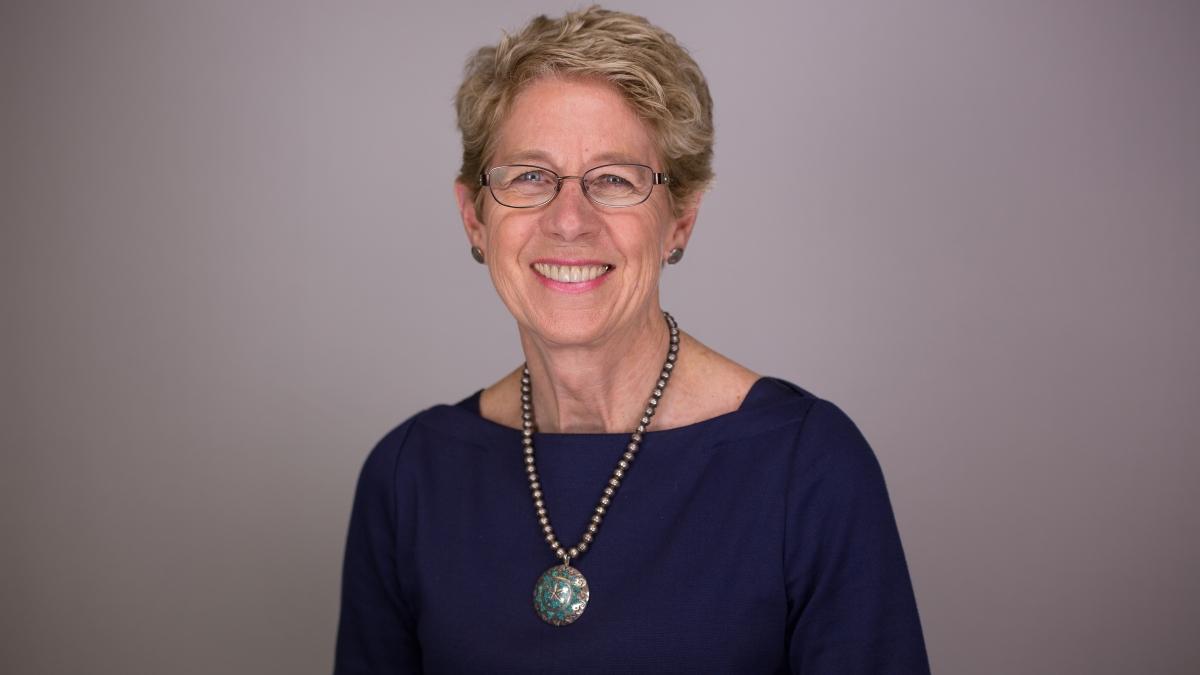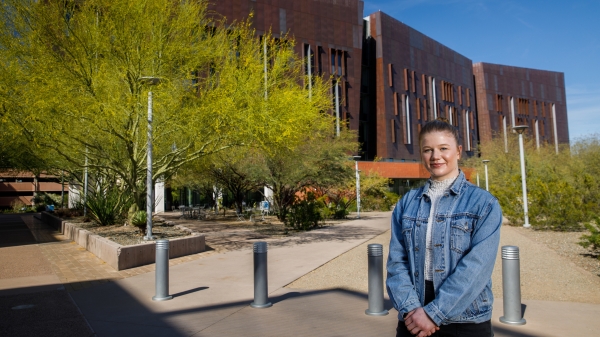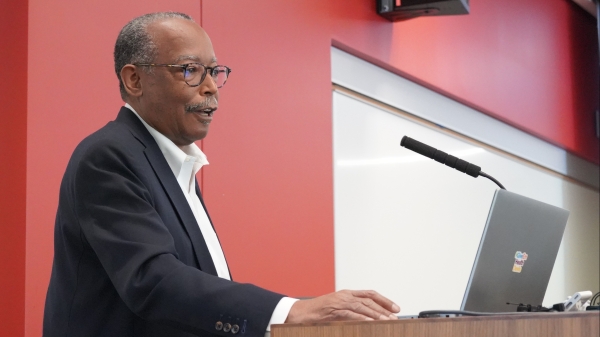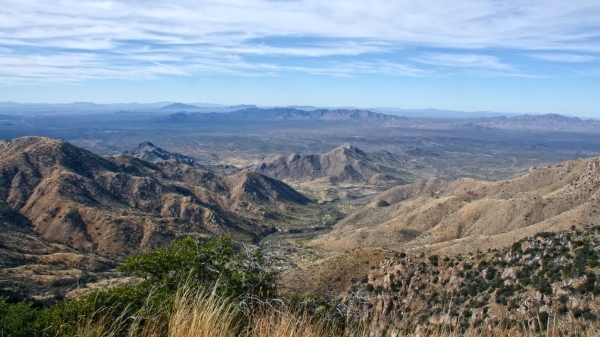Putting the humanity in nutrition
Health Solutions' Linda Vaughan retiring after 36 years of helping ASU, students and underserved populations succeed

In her 36 years at Arizona State University, Linda Vaughan has overseen a lot of changes in the field of health and nutrition.
This summer, she has one more big change coming: retirement.
She has held a variety of positions — including her current one as directorSince 2011, Vaughan has served as the director of the School of Nutrition and Health Promotion, part of the College of Health Solutions. Prior to that, she was an associate dean in the College of Nursing and Health Innovation (2009-2011) and the School of Applied Arts and Sciences (2008-2009). She attained the role of full professor in 2000 and is one of a handful of professors in the College of Health Solutions. of the School of Nutrition and Health Promotion — has published more than 40 scientific peer-reviewed articles and one of the best-selling nutrition textbooks“The Science of Nutrition,” co-authored with Janice Thompson and Melinda Manore, has been translated in several languages and is now in its fourth edition., procured more than $2.2 million in grant funding and has received or been nominated for seven teaching awards throughout her career.
Her biggest role, however, won’t be found on her resume. Vaughan has served as the “glue” for the School of Nutrition and Health Promotion and has seen transitions from a small department on the Tempe campus to explosive growth on Polytechnic to its latest home on the Downtown Phoenix campus. She has overseen the integration of several new programs into the school, including Health Sciences, Medical Laboratory Sciences and a return of Kinesiology faculty and programs. During these transitions, Vaughan oversaw major expansions in the sizes of both faculty and staff hires and managed to unify the existing and new personnel into a collaborative, productive and supportive group.
“Linda was a valued and trusted adviser to me as the college was forming, is a beloved leader of the faculty and is highly regarded by students and staff,” said Keith Lindor, dean of the College of Health Solutions. “She has been innovative, creative, approachable and supportive in every way. She is the ideal colleague and has been a valued contributor in many, many ways to a large number of people.”
Faculty numbers were small when Vaughan was hired by ASU in the fall of 1979, when “nutrition” was just a small group, then known as the Department of Home Economics.
“We started out with four people in our area, but it had dwindled to one full-time faculty member and we were still on a 3/3 teaching load, thus my teaching duties were exhaustive,” Vaughan said.
“But I lived for those aha moments — the moment in a student’s face registered, ‘I get it now.’ That’s the big reward, and that’s what carries you through the years.”
Food banks often are given a lot of muffins, doughnuts and other bakery items. ASU professor Linda Vaughan worked with the United Food Bank to develop software that could track both the amount and the nutrient quality of the food being distributed.
Vaughan has taught a wide array of students, many of whom might be described as “non-traditional” — a 70-year-old retired Home Economics Chair, two professional chefs, a retired ballet dancer, dozens of women returning to school after raising families, military veterans, an engineer, a high school English teacher, a public relations manager and several student athletes, including three who competed at the Olympic games.
“I owe my entire career to Dr. Linda Vaughan,” said Tina Shepard, a former student and the current director of the Dietetic Internship program at ASU. “I served as her teaching assistant back in 1986, and she convinced me to become a registered dietitian, which was the best nutrition career advice I ever received.
“Then 10 years later, I returned to Arizona and she helped me get a position in our college. A few years later, she hired me to become the new Dietetic Internship director for our program. Through every step of my career, it was Linda Vaughan who encouraged me, believed in me, and helped me move forward in the nutrition field.”
Vaughan’s research explored how nutrition relates to chronic disease across a woman’s life cycle in Hispanic, Native American, pregnant and prenatal women, low-income elderly and other underserved populations.
“I came to learn that poverty was much more widespread than I ever thought and that you can never tell by looking at someone who was in poverty,” Vaughan said.
In addition to making significant impacts in research and teaching, Vaughan has been a consistent contributor in service. She served two terms on the ASU affirmative-action committee, was a member of the Havasupai Tribal Initiative and is a former board member and current volunteer for the United Food Bank and sits on the board of the Arizona March of Dimes. In addition, she also supports the MANA House, a facility in Phoenix that provides transitional housing to military homeless veterans.
“I came to learn that poverty was much more widespread than I ever thought and that you can never tell by looking at someone who was in poverty.”
— Linda Vaughan, director of ASU's School of Nutrition and Health Promotion
Vaughan’s work with the United Food Bank also spilled over into her research. She assisted the group in developing a computerized system to not only track the amount of food distributed, but the nutrient quality of food distributed to recipients.
“This was a big step because they had no idea if they were giving out nutritious food or foods with low nutrient value,” Vaughan said. “If you’ve ever been to a food bank, you will often see a lot of doughnuts, day-old cake and other perishable bakery items. The director knew intuitively these types of foods weren’t ideal in terms of supporting the health of their clients, but they didn’t know if they were successfully ‘balancing’ the total food packages with highly nutritious donations, either.
“So we helped them evaluate the nutrient distribution of the foods they received then distributed. As it turned out, the food bank was doing a very good job in providing their clients with key vitamins, minerals and protein.”
One might say Vaughan offered similar balance to ASU during her 36-year tenure, which is why in April she received the ASU Commission on the Status of Women Outstanding Achievement and Contribution Award in the faculty category, and more recently why the ASU Foundation established the Linda Vaughan Scholarship Endowment. The scholarship is intended for nutrition students, undergraduate or graduate, and is based on academic merit and financial need. So far more than 70 individuals have contributed to this fund, including faculty, staff and former students.
Vaughan says the scholarship is important to her because it’s a gift that will keep on giving, pretty much what she’ll do in retirement. She plans to rejoin the United Food Bank board and work on specific projects there. Vaughan also wants to teach adults how to swim, so that their children are more likely to learn how to swim, and spend more time with her grandson, who is 5 months old.
“It’s been a great ride, and I’ve loved every minute of it,” Vaughan said. “I’ll miss ASU, I’ll miss the faculty and staff I’ve worked with and the students, but it’s time for me and I’m ready.
“I’m happy with what I’ve done and happy how I’m leaving the school. They are going to do great things.”
More Health and medicine

First exchange student for Biodesign Institute Europe bridges labs 5,000 miles apart
This spring semester, Grace Colley traveled to Arizona State University and became the first student to participate in the Biodesign Institute Europe student exchange program. In doing so, she helped…

College of Health Solutions hosts visit from leading expert in genomic research
Some fortunate Arizona State University faculty, staff and students were able to gain valuable insights and perspective during a visit by one of the country’s leading figures in health and scientific…

Indigenous ASU research team recommends assistance for tribal members still reeling from COVID-19’s effects
When Matt Ignacio’s tribe, the Tohono O’odham Nation, donated $1 million to Arizona State University to support COVID-19 research, he applied for some of the money to understand and report any…
